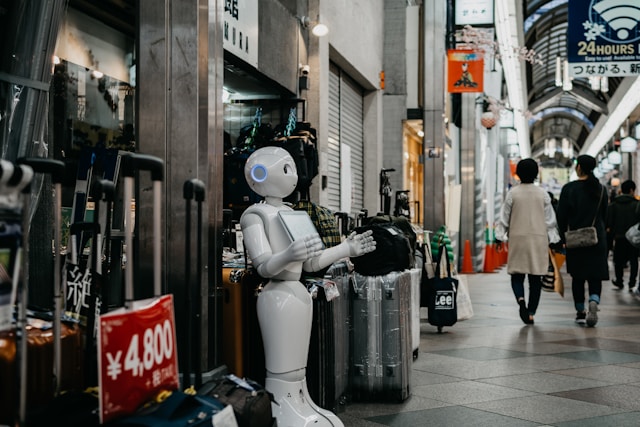Artificial intelligence might sound like something out of a sci-fi movie, but the truth is, it’s already woven into your everyday life often in ways you don’t even realize. From the moment you wake up and check your phone to when you relax with a streaming show before bed, AI is quietly working behind the scenes to make things faster, easier, and more personalized.
This article will explore the many ways AI is already a part of your daily routine, highlighting real-world, practical examples that prove artificial intelligence isn’t just for tech experts or futuristic robots. It’s already all around you.
What Is AI, Really?
At its core, artificial intelligence is about machines mimicking human intelligence. That includes learning from data, recognizing patterns, making decisions, and even predicting what you might want next. AI powers everything from voice assistants and recommendation engines to smart home devices and even fraud detection systems.
The best part? You don’t need to understand complex algorithms to appreciate how AI improves your everyday life.
Smartphones: Your Pocket-Sized AI Assistant
Smartphones are probably the most common way you use AI in everyday life, often without giving it a second thought.
Voice Assistants like Siri, Google Assistant, and Alexa use natural language processing (NLP) to understand and respond to your questions. Whether you’re asking for weather updates or setting a reminder, AI is doing the heavy lifting.
Predictive Text & Autocorrect are powered by machine learning algorithms that analyze your typing habits, suggest the next word, and correct spelling errors even before you notice them.
Facial Recognition uses image recognition technology to unlock your phone securely and quickly. It scans key features of your face and learns to adapt, even as your appearance changes.
Photo Organization in apps like Google Photos uses AI to group images by faces, locations, or even objects making it easier than ever to find that vacation photo from three years ago.
Streaming Services & Entertainment
Ever wonder how Netflix knows exactly what you want to watch? Or how Spotify curates the perfect playlist for your mood?
Recommendation Engines are one of the most powerful AI tools in use today. They analyze your past behavior what you’ve watched, liked, skipped and compare it with millions of other users to predict what you might enjoy next. These systems not only personalize your experience but also help platforms keep you engaged longer.
Social Media Feeds also use artificial intelligence algorithms to show you content that’s most likely to grab your attention. From TikTok’s viral For You page to Instagram’s Explore tab, AI curates your digital world.
Smart Homes: AI Behind the Scenes
The rise of smart homes is another example of how artificial intelligence is being seamlessly integrated into everyday living.
Smart Speakers like Amazon Echo or Google Nest use AI to interpret commands, play music, control devices, and answer questions. These devices get smarter over time as they learn your habits and preferences.
Smart Thermostats like Nest adapt to your routines, adjusting temperatures automatically to save energy and keep your home comfortable.
AI-powered Appliances from fridges that track your grocery usage to robot vacuums that map your home layout are making home life more efficient and even fun.
Online Shopping & E-commerce
Shopping online is another area where artificial intelligence plays a huge role often without your knowledge.
Product Recommendations on sites like Amazon are tailored using AI that analyzes your browsing and purchase history. These systems are incredibly effective at suggesting items you didn’t even know you needed.
Chatbots and Virtual Assistants provide 24/7 customer service, answering your questions and helping you find products all without involving a human.
Fraud Detection in online payments uses AI to spot unusual activity in real time. This keeps your transactions safe and helps companies respond to threats instantly.
Navigation & Transportation
Getting from point A to point B has never been smarter, thanks to AI tools that improve navigation and transportation.
Google Maps and Waze use real-time traffic data, AI algorithms, and predictive modeling to suggest the fastest routes and alert you to delays.
Ride-Sharing Apps like Uber and Lyft use AI to match passengers with nearby drivers, calculate fares, and optimize routes. They even adjust pricing based on demand, all in real time.
Health & Fitness Tracking
Artificial intelligence is also revolutionizing how we monitor and improve our health.
Fitness Trackers and Smartwatches like Fitbit and Apple Watch use AI to track steps, monitor heart rate, and provide insights into your physical activity and sleep patterns. Over time, these devices learn your routines and offer more accurate health recommendations.
Health Apps use AI to remind you to drink water, suggest workouts, or even assess symptoms before recommending a doctor’s visit.
Virtual Health Assistants in telemedicine platforms are now helping patients get faster responses, schedule appointments, and even conduct preliminary assessments all powered by AI.
AI in the Workplace
Even your workday is touched by artificial intelligence in ways that may go unnoticed.
Spam Filters in email systems are powered by AI that scans and blocks unwanted messages based on known patterns and user reports.
Grammar and Writing Assistants like Grammarly or Microsoft Editor use machine learning and natural language processing to catch grammar mistakes, improve sentence clarity, and suggest tone adjustments.
Scheduling Assistants and Smart Replies in tools like Google Calendar or Gmail help automate routine tasks, making your workflow smoother and more efficient.

